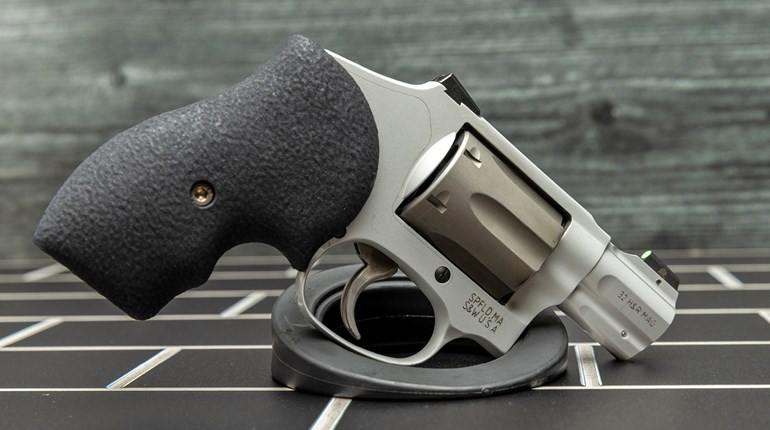
In July of 2007, I wrote an article for Shooting Illustrated's print magazine titled “Bullet Behavior Classified.” The focus of the article was how to classify rifle-hunting bullets based on performance. I devised this bullet-behavior-classification (BBC) system to help hunters better select bullets based on real-world—not advertised—terminal performance. The formula to establish bullet behavior was relatively simple, but required a bullet that had been fired into a test medium or an animal. What this formula revealed was if a bullet delivered fragmenting, balanced or penetrating performance.
At the time, I never really thought about applying this classification system to defensive-handgun bullets. This was primarily because all of the most-effective and trusted defensive-handgun bullets work quite similarly. However, boredom set in the other day and I got to crunching some numbers. While what I discovered might be considered somewhat obvious, it does help explain the dynamics of terminal performance as it relates to defensive-handgun ammunition for the most-common, defensive-handgun cartridges, just as it does for rifle ammunition.
The bullet-classification system is broken down into five categories. On one end, you have bullets that tend to shed lots of weight and deliver shallow penetration. These bullets are classified as fragmenting. While there have been some reasonably interesting attempts at creating excessively fragmenting defensive-handgun bullets—like the Glaser Safety Slug—they have never achieved an accepted following.
On the other end of the spectrum are the penetrators. These are bullets that expand very little or not at all and penetrate quite deep. Obvious members of this classification would be full-metal-jacket and hard-cast bullets. While some folks trust and carry these loads for self-defense and even for bears and such, with regard to personal protection, they are not as popular as more-common JHP bullets.
In the middle, you have the balanced bullets. These are generally HP or JHP bullets that expand and penetrate reasonably well. Flanking this balanced section are the maximum-expanding and minimal-expanding categories. You would think that somewhere within the balanced classification is where most bullet engineers would try to create defensive-handgun bullets. After all, when it comes to rifle bullets for hunting big game, this is considered the sweet spot.

Calculation Example:
If a 9 mm bullet has a recovered weight of 124 grains, and an unfired weight of 124 grains, you would divide the recovered weight by the unfired weight (124/124=1) and then multiply the result by 100 (1x100=100). The next step is to divide that number by the expansion factor. The expansion factor is the recovered bullet diameter divided by the unfired bullet diameter. In this case, let’s assume the recovered diameter was .66 inch. (.60/.356=1.85). One hundred divided by 1.85 equals 54, which falls on the edge of the balanced-bullet classification.

With defensive-handgun ammunition, that’s not the case. This is primarily because defensive-handgun cartridges struggle to meet what has become accepted as the ideal depth of penetration—about 12 inches. In order to develop bullets that will repeatedly reach that depth of penetration, tissue destruction/expansion is sacrificed. In other words, most defensive-handgun bullets fall right on the edge of the balanced category or within the minimally expanding category, so they can deliver the desired level of penetration.
For example, I averaged the terminal performance of more than 100 bullets, fired from six common defensive-handgun cartridges and found the average behavior score to be 61.5—firmly in the middle of the minimally expanding category. Now, while that might not be all that illuminating, there is another fact that might be: You see, while velocity is not a part of the classification system, it is clearly a controlling factor.
The cartridges with the lowest average velocity—the .380 ACP and .38 Spl.—had the highest classification score. This means the bullets from these cartridges are designed to expand less, in order to penetrate deeper. The next highest-average BC score was logged by the .45 ACP. Keep in mind that a high score is not necessarily a good score. An ideal score—50—would be delivered by a bullet that perfectly balanced expansion and penetration.
On average, the most-balanced projectiles—those delivering ideal wounding potential—were fired from the 9 mm, .40 S&W and .327 Fed. Mag. The key was velocity; handguns that generate higher velocities can use more-balanced bullets.

The point is not to declare one cartridge better than the other. Obviously, individual loads will vary greatly in performance. This comparison is one of averages. More importantly, bullet-behavior classification illustrates how terminal ballistics work. To achieve the best balance of tissue destruction/expansion and penetration from a defensive handgun that is reasonably controllable, you need velocity—the more the better. Velocity is what creates the necessary energy for the bullet to deform/expand and damage large amounts of tissue, while still penetrating to a depth—about 12 inches—considered sufficient for self-defense.
Velocities less than 1,000 fps will require a minimally expanding or penetrating bullet to reach or approach the desired depth. As velocities approach the 1,200 fps mark, a more-balanced bullet can be used. Though I’m not one to declare certain cartridges better at stopping bad guys than others, you have to see that the correlation between this data and the legendary effectiveness of the high-velocity performance of the .357 Mag. Velocity matters.


































